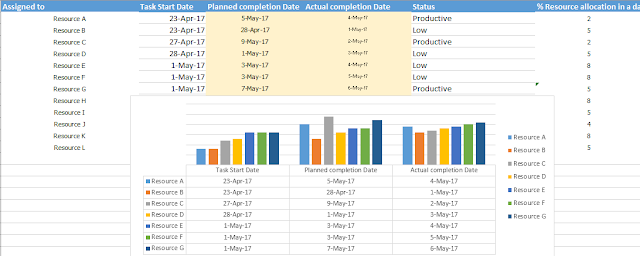...that makes me often think if there is no way that you can avoid corruption in the professional world because so bound is everything together that the more you try to resolve dependencies, the more they crop up in another form, in another aspect or place.
Productivity
Velocity, that you often hear trumpeted in Scrum, can be quite misleading.
Velocity, in common terms, means distance traveled over time. But the distance needs point A from where the calculation of speed begins, and point B,
where the calculation ends.
Velocity, in Scrum, is calculated by the number of features/tasks/stories/bugs completed/delivered/fixed by a Sprint member over a given period of time.
More specifically, in the Scrum context, the points associated with a Story - in Agile parlance, a User Story can have some points associated with it as an estimate of effort - are added up for each successfully delivered story and the sum is the velocity achieved for a sprint or a timebox. Velocity is a paraphrase, or an euphemism, for Productivity.
Productivity needs two parameters, too - one, time (usually called planned or scheduled) and two, money (usually called budgeted or allocated) - and as in matters of relativity (!), needs a surface ie., resources (usually called resources allocated).
The below image depicts all the data that is needed to measure productivity.
But, the picture although tells a lot still does not bring to light the need to measure productivity ie., a platform from which future planning, additional productivity improvements steps can be taken.
And, we also have the assignment of the resource - two resources are assigned to a task at 60 and 50% respectively and the formula (G12+G13) that has calculated shows (in the top left of the below image) that both the values have been taken into account to calculate the planned date.
Productivity is a dangerous metric to use or measure unless it is done in a mature environment and around maturer sets of people. Discussed or analyzed, especially on the internet where the amalgamation is made of disparities and varied cultures, the metric will fail to convince due also to relative application of local work culture and employee engagement parameters.
In conclusion, productivity in Scrum can be measured if the following is true:
1. All Scrum members do not take any leave during sprint (s)
2. All Sprint members are equally skilled and experienced (difficult to achieve)
3. All Sprint members are co-located.
Productivity
Velocity, that you often hear trumpeted in Scrum, can be quite misleading.
Velocity, in common terms, means distance traveled over time. But the distance needs point A from where the calculation of speed begins, and point B,
where the calculation ends.
Velocity, in Scrum, is calculated by the number of features/tasks/stories/bugs completed/delivered/fixed by a Sprint member over a given period of time.
More specifically, in the Scrum context, the points associated with a Story - in Agile parlance, a User Story can have some points associated with it as an estimate of effort - are added up for each successfully delivered story and the sum is the velocity achieved for a sprint or a timebox. Velocity is a paraphrase, or an euphemism, for Productivity.
Productivity needs two parameters, too - one, time (usually called planned or scheduled) and two, money (usually called budgeted or allocated) - and as in matters of relativity (!), needs a surface ie., resources (usually called resources allocated).
The below image depicts all the data that is needed to measure productivity.
And, we also have the assignment of the resource - two resources are assigned to a task at 60 and 50% respectively and the formula (G12+G13) that has calculated shows (in the top left of the below image) that both the values have been taken into account to calculate the planned date.
Productivity is a dangerous metric to use or measure unless it is done in a mature environment and around maturer sets of people. Discussed or analyzed, especially on the internet where the amalgamation is made of disparities and varied cultures, the metric will fail to convince due also to relative application of local work culture and employee engagement parameters.
In conclusion, productivity in Scrum can be measured if the following is true:
1. All Scrum members do not take any leave during sprint (s)
2. All Sprint members are equally skilled and experienced (difficult to achieve)
3. All Sprint members are co-located.





